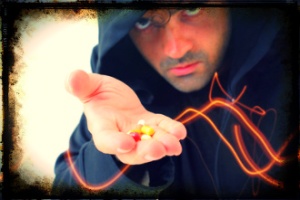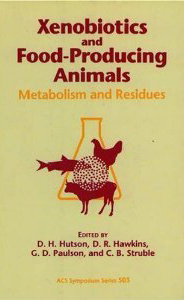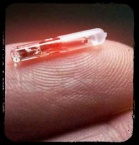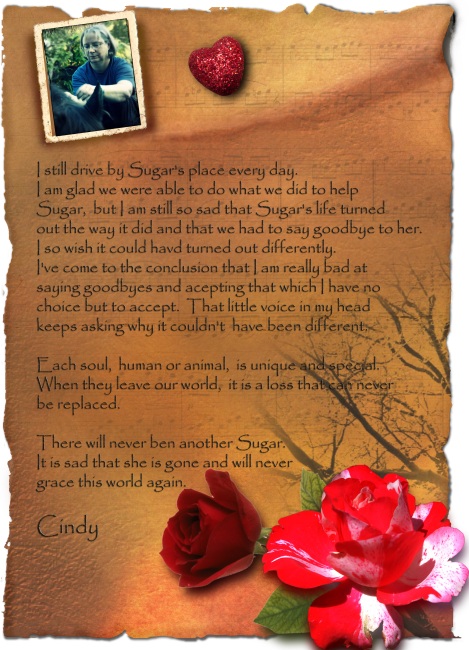Written by: Heather Clemenceau
 With the abandonment of the CanEquid program by Equine Canada, which has determined that it’s not a workable solution, Bill DesBarres has taken up the cause, bombarding horse associations with pro-chip marketing diatribe, attempting to lay the infrastructure to satisfy EU demands for horsemeat, all under the guise of isolating disease. He has partnered with Animal ID Systems, which has been heavily promoted by Cargill Meat Solutions, Monsanto and Schering-Plough – Big Ag intensive production systems, and this initiative was partially funded by the AgriMarketing Program of Agriculture and Agri-Food Canada. Read the Equine Canada report – Equine Canada – Summary Report to Industry
With the abandonment of the CanEquid program by Equine Canada, which has determined that it’s not a workable solution, Bill DesBarres has taken up the cause, bombarding horse associations with pro-chip marketing diatribe, attempting to lay the infrastructure to satisfy EU demands for horsemeat, all under the guise of isolating disease. He has partnered with Animal ID Systems, which has been heavily promoted by Cargill Meat Solutions, Monsanto and Schering-Plough – Big Ag intensive production systems, and this initiative was partially funded by the AgriMarketing Program of Agriculture and Agri-Food Canada. Read the Equine Canada report – Equine Canada – Summary Report to Industry
DesBarres, who has steadfastly maintained that a $200 slaughter horse stubbornly clinging to life is what’s preventing you from buying a $2,500 horse, makes his appeal here – http://www.horsewelfare.ca/images/stories/traceability/equine_id_traceability_letter_21sept2012.pdf. Please take the time to read the Canadian Horse Defence Coalition’s response and Call To Action here.
In DesBarres own words:
“As you are aware, identification, tracking and communication related to diseases is becoming more critical, as well as the European Union has a timetable for the adoption of

DesBarres “pays back” his horses by slaughtering them
standards for the export of all equine products. It is imperative for the welfare of Canada`s equine herd we move forward with ETC. our industry can no longer afford more lengthy delays, decisions must be made and action taken.
Once implemented, the system will be available to all members of the Equine Industry in Canada regardless of their affiliation with other existing associations and registries. There is no requirement to be a member of HWAC and HWAC will invite all industry members to work with them in order to create a single equine identification and tracking system. Part of the implementation process is to work with other organizations to integrate, at an appropriate level, data between existing databases and ETC. “
The chip for horses is not about disease-tracking, as Bill DesBarres and HWAC would have the various horse owners and associations believe – it is not about science either – it’s about satisfying requirements to make horsemeat a world-wide commodity. Here’s a very good example of why that is the case – when a single atypical case BSE was found in the US a few months ago, all trade to South Korea stopped immediately – this was based on trade and politics – not science, since the cause of the BSE in this example was mutagenic and posed no risk to any other animals. Random genetic mutations happen all the time in nature, so once in a while a cow will be born with a mutation that makes the BSE prion.
Would it be acceptable to you if your own personal home/premises/farm were registered with the government and monitored as if you were a food producer? These commodities traceability programs require every farm or “premises” be registered with government agencies, even if that premises houses a single animal. While the purported goal of disease containment appears to be beneficial, the requirement for citizens to register privately-owned property for tracking and monitoring purposes has very serious implications for our privacy, rights and freedoms – even more so because we are not raising food animals. As designed, traceability systems will be no more effective in stopping the spread of mass-level outbreaks than the current policies are, which rely on the owner to communicate federally reportable diseases – EIA (swamp fever), contagious equine metritis, equine piroplasmosis, rabies, anthrax, and provincially reported diseases – salmonella, WNV.
 Since Americans in particular avoid eating horsemeat, the official explanation for including horses shifts to their ability to serve transmission vehicles for diseases affecting other types of livestock. If that is the concern, then what is to be done about the dogs that live on most places that have livestock present? What about the wild horses on the open range? How about the other ever-present species, such as wolves, coyotes, deer, elk, cats, mice, or prairie dogs? What about humans, for that matter? It is, after all, possible to transmit disease should I go from one farm to another, via human contact. Traceability programs ONLY benefit corporate agriculture and factory farming so they can sell their product on the global level. If animal disease is even suspected in an area, the USDA or the CFIA could go in and kill all the animals. That is supposed to show the world market that buys the factory farmed meat how safe it is. I am assuming that insurance will not cover the loss of your horse if it is killed because of a disease containment program, when your horse is not ill.
Since Americans in particular avoid eating horsemeat, the official explanation for including horses shifts to their ability to serve transmission vehicles for diseases affecting other types of livestock. If that is the concern, then what is to be done about the dogs that live on most places that have livestock present? What about the wild horses on the open range? How about the other ever-present species, such as wolves, coyotes, deer, elk, cats, mice, or prairie dogs? What about humans, for that matter? It is, after all, possible to transmit disease should I go from one farm to another, via human contact. Traceability programs ONLY benefit corporate agriculture and factory farming so they can sell their product on the global level. If animal disease is even suspected in an area, the USDA or the CFIA could go in and kill all the animals. That is supposed to show the world market that buys the factory farmed meat how safe it is. I am assuming that insurance will not cover the loss of your horse if it is killed because of a disease containment program, when your horse is not ill.
I like this summation here – written by an American veterinarian and farm owner who has obviously given this considerable thought – please read the statement of Dr. R. M. Thornsberry, DVM, MBA, President of R-CALF USA, who writes:
“It is important for horse owners to know why NAIS is being forced on the equine industry within the United States.
The United States and many other countries signed a World Trade Organization (WTO) treaty in the 1990’s which obligated the first world countries, which had spent literally millions and millions of taxpayer dollars to eradicate contagious animal diseases, to develop a system of individual animal identification.
The individual animal identification was demanded by the Organization of International Epizootics (OIE), a WTO world wide governmental agency, tasked with developing trade rules and internationally obligated trade regulations that would force animal and meat trade between countries that had eradicated contagious diseases with those that had not eradicated contagious animal diseases.
 In other words, the United States, which had eradicated Equine Piroplasmosis in the 1980’s, a tick borne protozoal infection, would, by identifying all equines, be forced to trade with countries that had not eradicated Equine Piroplasmosis.
In other words, the United States, which had eradicated Equine Piroplasmosis in the 1980’s, a tick borne protozoal infection, would, by identifying all equines, be forced to trade with countries that had not eradicated Equine Piroplasmosis.
In general, the argument goes something like this: Once you can identify every equine at birth and trace their every movement off the farm from birth to death, a first world country that has spent millions of taxpayer dollars to eradicate Equine Piroplasmosis, can no longer prevent trade with those countries who have refused to spend the necessary resources to eradicate Equine Piroplasmosis.
The United States Department of Agriculture, Animal and Plant Health Inspection Service (USDA-APHIS) no longer seeks to carry out their mandate to prevent the introduction of foreign animal and plant diseases into the United States. Currently, USDA-APHIS in supporting NAIS, spending millions of tax payer dollars to entice livestock and equine owners into the system by promoting the acquisition of a free Premises Identification Number (PIN) from their respective state departments of agriculture.
Producers of cattle, and equine owners, are the two classes of livestock owners who have overwhelmingly refused to receive an internationally sanctioned encumbrance to their private property. The USDA says a PIN is the first step to a painless process of identification of all livestock owners’ physical locations, and that this PIN number is essential for the USDA to find a farm and quickly trace the movement of animals in the face of a contagious animal disease outbreak.
Yet, in any location within the state of Missouri, and I am sure in most states, you can simply punch 911 into your phone, and in a matter of 15 to 20  minutes, the police, the fire department, the ambulance, the sheriff, and usually the Conservation Commission Agent will be at your doorstep, but the USDA says they cannot find you? At every Agricultural Services-USDA office in the United States, you may obtain a description of your farm or ranch, including a current aerial photograph.
minutes, the police, the fire department, the ambulance, the sheriff, and usually the Conservation Commission Agent will be at your doorstep, but the USDA says they cannot find you? At every Agricultural Services-USDA office in the United States, you may obtain a description of your farm or ranch, including a current aerial photograph.
You can go on Google Earth, type in your physical address, and privately obtain a detailed satellite photograph of your farm or ranch, providing such detail, that you can actually count individual cattle or horses in your pasture, and the USDA says it cannot find your farm or ranch in a contagious animal disease outbreak? The reasons the USDA want you to obtain a Premises Identification Number have nothing whatever to do with the USDA’s ability to find your farm or your cattle or your horses. My 10 year old grandson can find my farm, a detailed satellite photograph of my farm, my telephone number, my mailing address, and my physical address on his computer in a matter of seconds. It’s called Google!!!
The USDA-APHIS has testified before the United States Department of Agriculture, House of Representatives, Committee on Agriculture, Subcommittee on Livestock, Dairy, Poultry, March 11, 2009 that the NAIS would have to be electronic in nature to function as envisioned by the WTO. This simply means no visual tags, hot or cold brands, tattoos, ear notches, or individual color markings or descriptions will be allowed for individual animal identification.
While this is a problem for other types of livestock, for the equine industry, it becomes a major hurdle to overcome. For equines, dogs, cats, fish, poultry, and many exotic animals, the only acceptable means of electronic individual animal identification is a surgically implanted glass enclosed electronic microchip. This implant is not nearly as simple to surgically implant within an animal as some are led to believe.
 When I implant a chip into an animal, I clip or shave the area. I scrub the area with surgical preparation soap containing iodine, and I finish by spraying the area with a surgical site disinfection iodine-alcohol solution. Lastly, I inject the area over the site of implantation with lidocaine to render the skin and underlying tissues devoid of sensation. The chips come individually packaged in a sterile container. To maintain this sterility, I must be sterile, which requires a surgical scrubbing of my hands, and the donning of a pair of sterile surgical latex gloves. Only after this extensive preparation, am I ready to actually implant the chip in the nuchal ligament of the mid neck area of my equine patient. Compare this process to the cattle producer who simply places a small eartag in his cattle.
When I implant a chip into an animal, I clip or shave the area. I scrub the area with surgical preparation soap containing iodine, and I finish by spraying the area with a surgical site disinfection iodine-alcohol solution. Lastly, I inject the area over the site of implantation with lidocaine to render the skin and underlying tissues devoid of sensation. The chips come individually packaged in a sterile container. To maintain this sterility, I must be sterile, which requires a surgical scrubbing of my hands, and the donning of a pair of sterile surgical latex gloves. Only after this extensive preparation, am I ready to actually implant the chip in the nuchal ligament of the mid neck area of my equine patient. Compare this process to the cattle producer who simply places a small eartag in his cattle.
The glass enclosed chips do not always stay put.
Like a splinter in your finger, the body often mounts a response to a foreign body, even one as innocuous as a piece of sterile glass. The response may include the formation of a sterile abscess around the chip, or it may simply be painful and generate a negative response from the horse as it turns its neck or tries to graze, or attempts a performance endeavor at a race, show, or event. Chips have been known to migrate quite extensive distances within the body of an animal. Ask any veterinarian that works in this area of interest.
Simply finding a chip to make a reading in some animals becomes a major undertaking. Only recently, has another side effect of chipping become known. A small percentage of veterinary patients have developed a cancerous growth at the site of implantation. While the incidence is low in animals whose lives are relatively short, an equine patient, living to the age of 20 to 35 years, has much more time to develop a cancerous growth around the implanted chip, than does a dog or cat, whose lifetime is closer 12 to 15 years.
age of 20 to 35 years, has much more time to develop a cancerous growth around the implanted chip, than does a dog or cat, whose lifetime is closer 12 to 15 years.
For a very complete summary and analysis of the scientific literature on microchips and cancer, see Katharine Albrecht, Ed.D., “Microchip Induced Tumors in Laboratory Rodents and Dogs: A Review of the Literature, 1990 to 2006,” available at www.antichips. com/cancer .

RFID chip
With all that being evaluated, the primary reason the USDA-APHIS desires to force the NAIS system onto the livestock sectors of the United States is simple: Bruce Knight told a large group of bovine practitioners at our annual meeting in Vancouver, Canada in September 2007, when asked why the USDA was pushing so hard for NAIS, and I quote, “It is quite simple. We want to be in compliance with OIE regulations by 2010.”
Now I don’t know about all you equine owners, but we cattle producers do not look kindly on an international agency in Belgium telling us what we can and cannot do with our livestock in the United States. Our grandfathers and fathers spend untold millions of dollars to assist the USDA in eradicating many serious contagious animal diseases during the last 75 years. Why would we now acquiesce to a system that will open up our privately owned animals to contagious animal diseases that we whipped and wiped out many years ago, for access to our marketplace to animals and meat from countries who have chosen in that same time period to ignore eradication of contagious animal diseases? No way!!!
We live in the United States, not the WTO. We have a Constitution that directs our legal system, not the OIE. We have a government by the people, for the people, and of the people. It is time for the people to stand up and say, “Enough with the one world government junk!!!”
If equine owners do not stand up and unite their voices with other livestock producers, NAIS will become mandatory in the United States. It will cost the equine owner in excess of $50.00 a head to implant the electronic microchip desired by the USDA and the WTO. You will then be required to report any movement of your horse or horses off your property, and for any reason.
Imagine the bureaucratic nightmare and the paperwork requirements of reporting to your government every time you go on a trail ride, every time you go to a show or an event, and every time you trailer a mare to go to the stud. There will have to be an NAIS office in every county seat to process all this data, keep track of your information, and report any violations to the USDA.
Just imagine the fines and enforcement actions that will be carried out to enforce this NAIS system on the livestock industry of the United States of America, including equine owners.”
R. M. Thornsberry, D.V.M., M.B.A.
March 28, 2009
People who want to move sick and diseased animals will unfortunately do so anyway in violation of any program purported to exist to prevent it. They simply won`t report it. And they are more than likely to be affiliated with slaughter to

I’m from the government, and I’m here to help
begin with. There are more than enough examples of injured and ill animals standing on feedlots in the US and Canada, or injured in shipment, or transferred across borders without Coggins-ing.
Send DesBarres a strong message – Our horses are not “products.”
Please be aware that the Horse Welfare Alliance of Canada is allied with the following business partners – please let them know that you hold them all to a higher standard than that maintained by an alliance with the Horse Welfare Alliance of Canada, the International Equine Business Association, and Sue Wallis:
Provincial Organizations
British Columbia
Horse Council |
Orville Smith
President
Lisa Laycock
Executive Director |
27336 Fraser Highway
Aldergrove, BC
V4W 3N5 |
Phone: 604-856-4304
Fax: 604-856-4302
Toll Free: 1-800-345-8055
Email |
Alberta
Equestrian Federation |
Dixie Crowson
President
Sonia Dantu
Executive Director |
100, 251 Midpark Blvd S.E.
Calgary, AB
T2X 1S3 |
Phone: 403-253-4411
Fax: 403-252-5260
Toll Free: 1-877-463-6233
Email |
Saskatchewan
Horse Federation |
Terry Fagrie
President
Mae Smith
Executive Director |
2205 Victoria Avenue
Regina, SK
S4P 0S4 |
Phone: 306-780-9244
Fax: 306-525-4009
Email |
Manitoba
Horse Council |
Geri Sweet
President
Bruce Rose
Executive Director |
145 Pacific Avenue
Winnipeg, MB
R3B 2Z6 |
Phone: 204-925-5718
Fax: 204-925-5703
Email |
Ontario
Equestrian Federation |
Allan Ehrlick
President
Deborah Thompsen
Executive Director |
Suite 203
9120 Leslie Street
Richmond Hill, ON
L4B 3J9 |
Phone: 905-854-0762
Fax: 905-709-1867EmailToll Free: 1-877-441-7112
Email |
Quebec
Fédération équestre du Québec |
Dominique Chagnon
President
Richard Mongeau
Executive Director |
4545 Ave Pierre de
Coubertic CP 1000
Succursale M
Montreal, PQ
H1V 3R2 |
Phone: 514-252-3053
Fax: 514-252-3165
Email |
New Brunswick
Equestrian Association |
Deanna Phalen
President |
Suite 13
900 Hanwell Road
Fredericton, NB
E3B 6A2 |
Phone: 506-454-2353
Fax: 506-454-2363
Email |
Nova Scotia
Equestrian Federation |
Helen Smith
President
Heather Myrer
Executive Director |
5516 Spring Garden Road
4th Floor
Halifax, NS
B3J 1G6 |
Phone: 902-425-5450 Ext 333
Fax: 902-425-5606
Email |
PEI
Horse Council |
Ken Smith
President
Joy MacDonald
EC Representative |
POB 1887
Charlottetown, PE
C1A 7N5 |
Phone: 902-964-2379
Email |
Newfoundland
Equestrian Federation |
Chris Gallant
President |
34 Circular Road
St. John’s, NF
A1C 2Z1 |
Phone:709-726-0826
Fax: 709-777-4558
Email |
Mailing address:
Horse Welfare Alliance of Canada
Box 785, Cochrane, Alberta
T4C 1A9
Bill DesBarres: Tel: 403-526-1070 Cell: 403-529-7237
http://horsewelfare.ca/contact
Email – gordmack@xplornet.ca
Agriculture and Agri-Food Canada 1341 Baseline Road
Ottawa, Ontario K1A 0C5
Tel – 613-773-1000
Toll-free – 1-855-773-0241
Email – info@agr.gc.ca
 The transition from summer to fall is a time when the air may still be hot, but the winds signal that a change is arriving. The fall is a time of letting-go; we prepare our gardens for the fall, pruning and fertilizing, removing spent foliage, and raking leaves. When the leaves flutter to the ground, we are reminded that nature’s cycles are mirrored in reality.
The transition from summer to fall is a time when the air may still be hot, but the winds signal that a change is arriving. The fall is a time of letting-go; we prepare our gardens for the fall, pruning and fertilizing, removing spent foliage, and raking leaves. When the leaves flutter to the ground, we are reminded that nature’s cycles are mirrored in reality.





























































